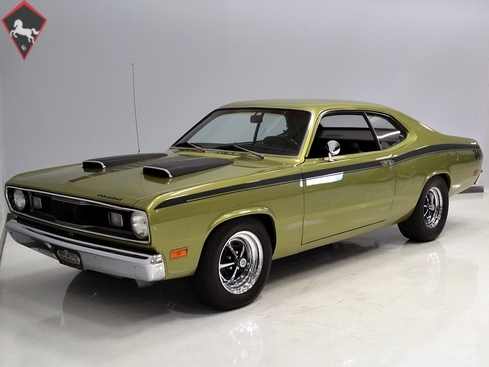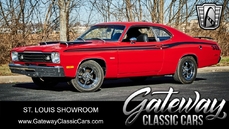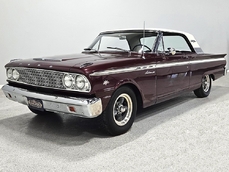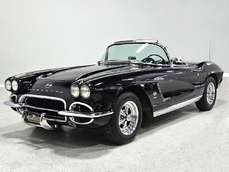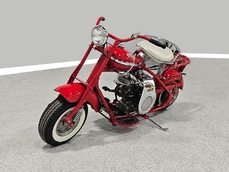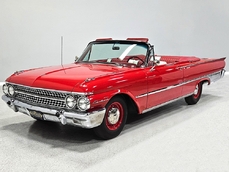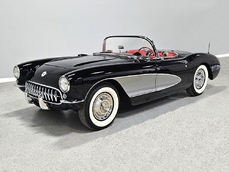Plymouth Duster 340 cubic inch V8 1971
General description :
In the performance world, taking weight out is the same as putting horsepower in. But what if you did both? Enter the Plymouth Duster, a plebian commuter car on the surface, but if optioned properly, you get one of the nastiest compacts of the early 1970s. Much like the Chevy Nova, engineers found that stuffing a V8 in their Duster created a car that could intimidate the hell out of much more powerful (and expensive) machinery. And they could do it on a budget!
All of that remains true today, as this 1971 Plymouth Duster might be the biggest bang for the buck in our inventory. We’ll start out by saying it wasn’t always a 340 car, beginning life with a slant-6, but what that means is that it was never abused, never raced, and with just over 13,000 original miles (you’re reading that correctly), it was a fantastic place to start. The sheetmetal is all original and there are no patches, no crappy reproduction panels, no half-hearted bodywork anywhere on the car. It’s just laser-straight. And while it had few miles, it was 45 years old, so it was fully disassembled, stripped, and repainted in its original Sherwood Green, a very 1971 color that works rather well on the intense little Duster. The final finish was wet sanded and buffed and it has a shine that should be on a car costing twice as much—it’s really impressive. Correct Duster 340 graphics were installed on the flanks and hood, as well as a set of Chrysler’s popular twin hood scoops which make this compact look more than a little nasty. All the chrome and stainless trim appears to be in excellent original condition and even details like the grille and taillights reflect the car’s low-mileage history. You probably won’t find a nicer $25,000 car anywhere else.
The black vinyl interior is almost completely original, which shouldn’t be a surprise given the low mileage. The front bench is almost like new, with no popped seams or notable wear, and there’s still a comfortable spring to it when you slide behind the wheel. Sure, it’s a bench seat car with a column shifter, but remember that these cars were not about upgrades and expensive options, they were performance on a budget and this car delivers in spades. Rubber floor mats are a reminder of the car’s working-class roots, but I don’t think anyone will complain about the accommodations once the engine cackles to life. The original wheel shows some age, but nothing that would demand replacement, and things like the woodgrained applique on the instrument panel and factory gauges are in excellent shape. And while this Duster carries a full array of instruments, someone has thoughtfully added a set of Auto Meter dials under the dash to better monitor the engine’s vitals, as well as a tach tucked under the pad. The transmission is a 727 TorqueFlite 3-speed automatic with a reverse manual valve body, so you do have to shift it yourself, but you’ll find that it’s actually a lot of fun to click the shifter down through the gears and feel the transmission shift instantly—you can probably bark the tires on the 2-3 shift if you’re running hard. And when you’re not running hard, there’s a recent AM/FM/USB stereo head unit for entertainment, but I bet you never use it. The trunk is obviously original and you can see that there’s exactly zero rust in this car and that it still sports its original quarters, floors, and trunk extensions. It’s only a reproduction mat away from being ready to show.
Showing is fine if that’s your thing, and this pretty Duster will always acquit itself well when it’s on display. But what it does best is hammer down the road, mostly thanks to the built 340 cubic inch V8 living under the hood. It would be a mistake to dismiss this small block, as more than a few guys in their 440 ‘Cudas were embarrassed by similar cars back in the day. This one is even more potent, having been recently rebuilt with an upgraded cam that gives it a lopey idle, a big 4-barrel carburetor, and beautiful ceramic-coated long-tube headers that help build torque. It is indeed detailed for show, with correct clamps, fasteners, and markings throughout, but the most remarkable thing is that when you turn the key, it springs to life almost instantly and idles well, even when it’s cold. Someone spent a lot of time tuning this one to get it right. Bright Hemi Orange paint looks great in the green engine bay, and power steering is a welcome find, making this car very easy to handle at any speed. You’ll note that the paint in the engine bay is just as nice as the rest of the body, and almost every single external component is new, not just cleaned up and bolted back on. There’s easily twice, maybe three times, the asking price wrapped up in the restoration.
Underneath it’s the same story: sanitary and solid. The aforementioned TorqueFlite was rebuilt with a modest torque converter and reverse manual valve body, but it doesn’t need a lot of throttle to get it rolling, so it’s not over-done. There’s a fresh 8.75-inch rear end out back with 3.91 gears inside, so it’s punchy as hell around town and there probably aren’t many cars that can get off the line better than this Duster. The floors are covered in a light dusting of undercoating, enough to protect everything but not hide the original seams, panels, and reinforcing ribs. Again, that’s more evidence of this car’s easy life someplace warm. The front suspension and steering are rebuilt, front disc brakes with big bolt circle hubs were installed (so the car can wear any wheels you like), and there are new shocks fore and aft. A fresh exhaust system with mellow-sounding Dynomax mufflers gives it some attitude without getting obnoxious when you’re cruising and there’s a new gas tank out back. It’s finished with a set of 15-inch Magnum 500 wheels and 205/70/15 BFGoodrich T/A radials in front and 275/60/15 drag radials out back (note the long wheel studs—this sucker was built for combat!).
Nobody—I mean nobody—restores Dusters to this level. It’s beautifully done, very authentic, yet upgraded in a few clever ways that make it a blast to drive on the street. The low mileage means that it’s tight and rattle-free inside and the high-quality build suggests that driving it for the next 15 years won’t be a hassle. Sometimes expensive cars can be a bargain and sometimes cheap cars can be expensive mistakes, but this car is both insanely affordable and exceptionally well finished. If you want the nicest Duster around, one that needs no excuses and delivers big performance for not a lot of cash, this is the best we’ve ever seen. Call today!
http://www.harwoodmotors.com/vehicles/inventory_details.php?id=691
1971 Plymouth Duster 340 cubic inch V8 is listed sold on ClassicDigest in Macedonia by for Not priced.
Car Facts
Car type : Car Make : Plymouth Model : Duster Model Version : 340 cubic inch V8 Engine size : 0.0 Model Year : 1971 Location : Ohio
Sold
Seller Information
Sold
People who viewed this Plymouth Duster also viewed similar Plymouth listed at ClassicDigest
Other cars listed for sale by this dealer
About Plymouth
The Plymouth brand had a significant impact on the automotive industry from its inception to its eventual discontinuation. Here is an overview of Plymouth, covering its history, notable models, and specifications:Early Years and Foundation:
Origins (1928): Plymouth was introduced by Chrysler Corporation as an affordable mid-level brand, targeting budget-conscious consumers.
Success Factors: It gained popularity due to its dependable engineering, affordability, and clever marketing campaigns.
Notable Models:
Plymouth Road Runner (1968-1980):
Iconic Muscle Car: Known for its performance, affordability, and minimalist design.
Specifications: Offered various V8 engine options with power ranging from 335 to 390+ horsepower.
Plymouth Barracuda (1964-1974):
Muscle Car Competitor: Positioned as a sporty competitor in the muscle car segment.
Specs: Engine options included V8s with power output varying between 145 to 425+ horsepower.
Plymouth Fury (1955-1978):
Longevity: One of Plymouth's longest-produced models, available in various body styles.
Technical Features: Engine options included V8s with power ranging from 215 to 375+ horsepower.
Plymouth Valiant (1960-1976):
Compact Car: Introduced as a compact car, known for its durability and reliability.
Engine Specifications: Featured inline-six and V8 engines with power ranging from 100 to 235+ horsepower.
Decline and Demise:
Later Years: Plymouth faced challenges due to brand dilution within Chrysler Corporation and increasing competition from other brands.
Discontinuation: The brand struggled in the 1990s amid corporate restructuring and declining sales. Plymouth ceased production in 2001 as part of DaimlerChrysler's streamlining efforts.
Legacy and Impact:
Plymouth's legacy lies in its contributions to the American automotive landscape, offering reliable, affordable, and stylish vehicles. While it faced challenges in its later years and ultimately ceased production, several of its iconic models, especially those in the muscle car era, remain celebrated among collectors and enthusiasts, leaving an enduring mark on automotive history.
